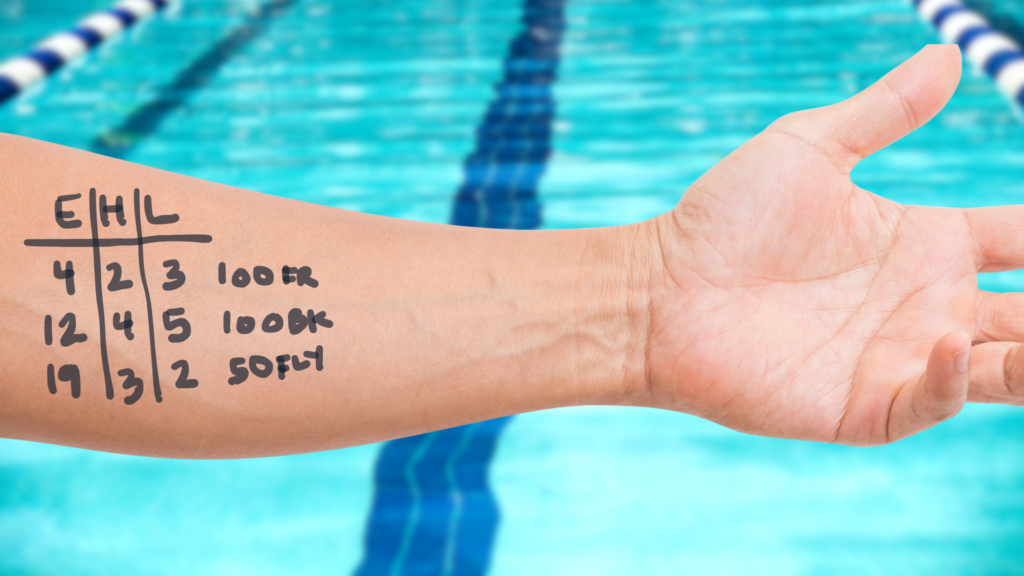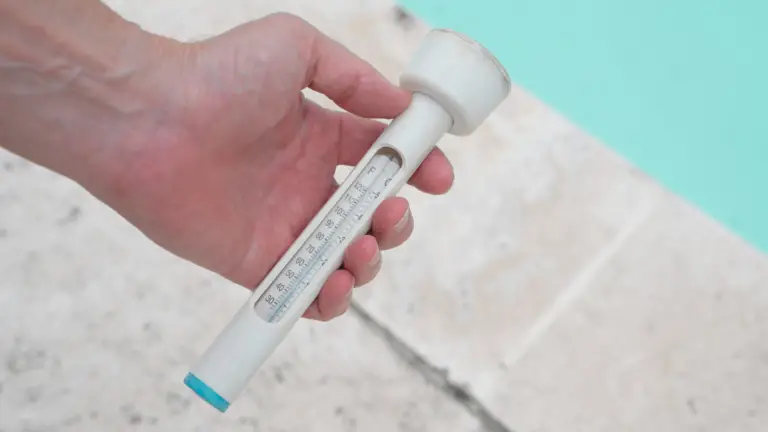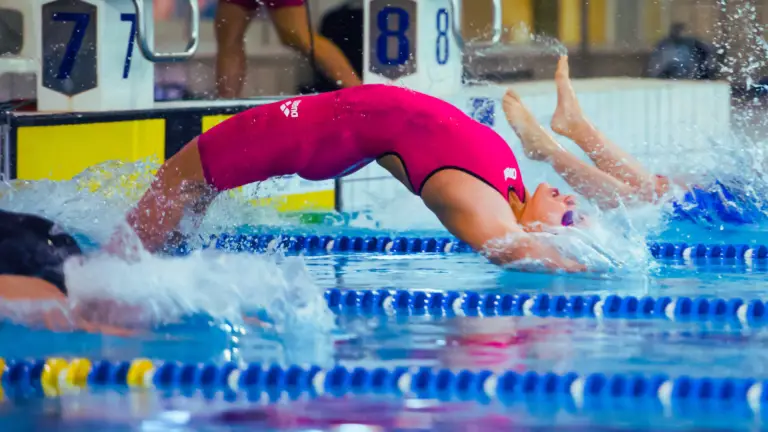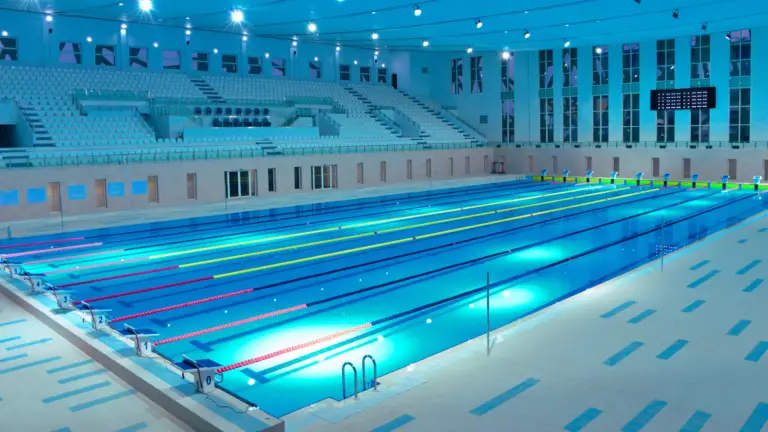As a professional swimmer and coach, I’ve learned that success in the pool isn’t just about how fast you can swim. It’s also about understanding the nuances of the sport, including the tools and documents that help guide a swim team through a swim meet. One such document is the heat sheet.
A heat sheet is a roadmap to a swim meet. It’s a document that tells you who’s swimming, in what event, in what heat, and in what lane. It’s the key to understanding the flow of the meet and knowing when and where you or your swimmer will be racing.
I remember the first time I encountered a heat sheet. I was a young swimmer, excited and nervous for my first big meet. My coach handed me this piece of paper filled with numbers and names, and I was overwhelmed. But as I learned to decipher it, I realized the power it held in helping me navigate the meet and prepare for my races.
What is a Heat Sheet?
A heat sheet, also known as a meet program, is a document that outlines the events of a swim meet. It includes information such as the order of events, the swimmers participating in each event, their lane assignments, and their seed times.
The heat sheet serves several purposes in a swim meet. It helps swimmers and coaches plan their races and strategies. It allows spectators to follow along and know when to expect their swimmer to race. It also helps meet officials organize and run the meet efficiently.
Understanding a heat sheet is crucial for anyone involved in a swim meet. It’s not just a list of names and numbers; it’s a tool that, when used correctly, can contribute to a swimmer’s success. For more in-depth information about swim meets, check out my article on understanding swim meets.
In the next sections, we’ll dive deeper into the components of a heat sheet and how to read one. So, whether you’re a swimmer, a parent, a coach, or a fan, you’ll be able to navigate your next swim meet with confidence.
Understanding the Basics of a Swim Meet Heat Sheet
A heat sheet is more than just a list of names and numbers. It’s a detailed guide to the swim meet, and understanding its components is crucial. Here are the key components of a heat sheet:
- Event Number: A short description of the event number, gender, age, distance, and stroke.
- Heat Number: This indicates the order of the races within an event. Swimmers in the same event but different heats will swim at different times.
- Lane Number: This tells you which lane the swimmer will be in for their race. Lane assignments can affect a swimmer’s race due to factors like pool depth and proximity to the pool wall.
- Name: The swimmer’s name. This helps you identify who is swimming in each race.
- Age: The swimmer’s age. This is important because swim meets are often divided into age groups.
- Team: The team, the swimmer, represents. This helps identify the swimmer and adds a layer of competition between teams.
- Seed Time: This is the swimmer’s best time in the event. It’s used to organize the heats, with the fastest swimmers usually in the later heats.
Here’s an example of how a heat sheet may be structured:
Event #:
| Heat 1 of 4 | ||||
|---|---|---|---|---|
| Lane | Name | Age | Team | Seed Time |
Each of these components plays a role in the swimmer’s performance and strategy. For example, knowing your heat and lane number allows you to plan your warm-up to be ready to race at the right time. Understanding your seed time and those of your competitors can help you strategize your race.
How to Read a Heat Sheet
Reading a heat sheet may seem daunting at first, but once you understand the components, it becomes much easier. Here’s a step-by-step guide:
- Find the Event: Events are usually listed in numerical order. Look for the event number and the corresponding name of the event.
- Identify the Heat: Under each event, you’ll see the heat listed. Find the heat number you or your swimmer is in.
- Look for the Lane: Within each heat, find the lane number assigned to you or your swimmer.
- Check the Name, Age, and Team: Confirm you have the right swimmer by checking the name, age, and team.
- Note the Seed Time: This is listed next to the swimmer’s name and can help you understand the competition.
Here’s an example of what a heat sheet might look like when filled out:
Event #4: Girls 8 & Under 25 Yard Freestyle
| Heat 1 of 4 | ||||
|---|---|---|---|---|
| Lane | Name | Age | Team | Seed Time |
| 1 | Emily Johnson | 7 | SSC | 42.31 |
| 2 | Olivia Davis | 8 | LP | 36.72 |
| 3 | Ava Martinez | 7 | SSC | 35.14 |
| 4 | Sophia Samson | 8 | SSC | 39.44 |
| 5 | Mia Anderson | 6 | LP | 50.68 |
I remember a swim meet where understanding the heat sheet made a significant difference. I was in a tight race, and my main competitor had a slightly faster seed time. By knowing this from the heat sheet, I was able to plan my race to stay close to her in the early stages and outpace her at the end. This strategy helped me win the race and taught me the value of understanding a heat sheet.
Decoding Team Names and Abbreviations
On a heat sheet, you’ll often see team names represented as abbreviations. These abbreviations are typically a few letters long and are used to save space on the sheet. For example, a team called “Shark Swim Club” might be abbreviated as “SSC”.
These abbreviations are significant because they allow you to quickly identify which team each swimmer represents. This can be especially useful in larger meets with many teams, where it can be challenging to keep track of who is swimming for which team.
Common Confusions and How to Avoid Them
Reading a heat sheet can be confusing, especially if you’re new to swim meets. Here are a few common confusions and tips on how to avoid them:
- Misreading Heat and Lane Numbers: It’s easy to confuse heat and lane numbers, especially in the rush of a meet. Always remember that the heat number refers to the order of races, while the lane number refers to the position in the pool.
- Confusing Events: With many events listed, it can be easy to lose track of which one you’re looking at. Always double-check the event number and name to ensure you’re looking at the right one.
- Misunderstanding Seed Times: Seed times are based on a swimmer’s previous performances, but they’re not a guarantee of how the swimmer will perform in the current meet. Use them as a guide, but remember that many factors can affect a swimmer’s performance.
- Overlooking Age Groups: Swim meets are often divided into age groups, and it’s important to note which age group an event is for. Don’t assume that because you see a swimmer’s name, it’s for your age group.
By understanding these common confusions and keeping these tips in mind, you’ll be able to navigate a heat sheet with ease and confidence.
Tracking Your Events Effectively
One of the keys to a successful swim meet is staying organized and keeping track of your events. With multiple events, heats, and lane assignments to remember, it can be easy to lose track. Here’s a simple strategy to help you stay on top of your races.
Firstly, always write down your event number(E), heat(H), and lane(L) as soon as you get your heat sheet. These are the most critical pieces of information that will guide you through the meet.
You can jot these details down in a small notebook or a piece of paper. Some swimmers prefer to write them on their hand or arm with a waterproof marker. Choose a method that’s easy for you to access and hard to lose or forget.

Having this information at your fingertips will help you know exactly when and where you need to be for each race. It allows you to plan your warm-ups and cool-downs effectively, manage your energy levels, and mentally prepare for each race.
FAQs
Conclusion
Understanding how to read a heat sheet is an essential skill for anyone involved in swimming. It’s not just about knowing when and where you’ll be racing; it’s about understanding the competition, planning your strategy, and being prepared to swim your best. So, before your next meet, take some time to practice reading a heat sheet. It might seem like a small thing, but it can make a big difference in your performance. Remember, in swimming, every detail counts.






